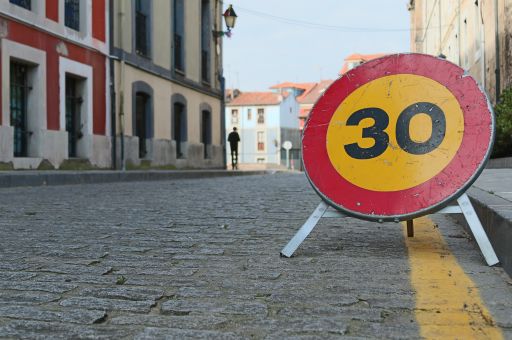The Directorate General of Traffic has presented a new edition of its specific control campaigns focusing this time on speed enforcement as one of the key risk factors in road accidents.
TDB keeps you informed. Follow us on Facebook, Twitter and Instagram
Speed limits a target for Europe’s traffic police
Radar speed control sign for particularly dangerous stretches of road speed control sign for particularly dangerous stretches of road.
Inappropriate speed is the third most common contributory factor in road accidents, especially those involving fatalities. In 2023, with 24-hour data within the DGT, 211 fatal accidents were recorded in which this factor was present.
The campaign will be carried out, from today Monday the 15th until next Sunday 21st, through the agents of the Traffic Grouping of the Civil Guard, as well as the rest of the local police that join it, to control especially risky stretches associated with speed, as well as those points where the circulation exceeds the established limit and there is a high accident rate, all following the recommendations of international and European organisations that urge the bodies in charge of road safety in the different countries to ensure that the established speed limits are complied with.
As this is a campaign also developed at the European level by the RoadPol (European Roads Policing Network) association, surveillance will be carried out not only in Spain but in all the countries belonging to this association.
Given its preventive nature, drivers will be informed of the existence of controls, either through variable message panels or through circumstantial vertical signage when the road does not have such panels.
Further measures
It has been shown that speed not only affects the risk of being involved in a traffic accident but also that the higher the speed, the more difficult it will be to react in time to prevent the accident and the more serious the injuries resulting from it.
For this reason, to reduce not only the number of fatal accidents but also the number of serious injuries, Traffic will install 88 new radars this year, 60% of which will be stretch radars. In addition, most of them will be placed on conventional roads, where 7 out of 10 fatal accidents occur.
Variable compliance
Based on the results of the European Baseline Project, as far as speed is concerned, the level of compliance with the speed limit in Spain varies according to the type of road.
While on motorways 63% of passenger cars drive within the speed limit (a high figure compared to other countries), on motorways this percentage drops to 51%. On conventional roads, which are the most dangerous, compliance with the speed limit is 43%, a low level, similar to that of Belgium (46%).
On urban roads with a 50 km/h limit, the level of compliance with the speed limit by passenger cars is 65%, the third highest of the 13 countries with which we share the limit.
On the other hand, on 30 km/h roads, the level of compliance is 32%, the highest of the three countries for which data is available. It is also worth noting that the average speed of cars on 30 km/h streets is 11 km/h lower than on 50 km/h streets (36 km/h compared to 47 km/h), a difference that greatly reduces the risk of a fatal or serious road traffic collision.
Also with the help of technology
All new vehicles registered after 6 July 2024 must be equipped with a number of advanced safety features, known as ADAS, including Intelligent Speed Assist (ISA).
This system, consisting of the vehicle’s navigator, which displays the speed limit on the road, and a sign recognition system that complements the digital mapping and detects temporary speed limits, helps the driver to be aware of the speed limit, and to be aware of the speed limit on the road.
